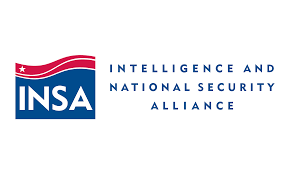Image: Shutterstock
Blog Editor’s Notes:
Two different items on the same underlying theme popped up on our radar recently. The first, an INSA proposal to designate space a critical U.S. infrastructure. The second an OpEd in SpaceNews by two highly respected analysts lamenting the lack of leadership and coherent American approach to international space issues.
The INSA proposal is not a new one. Similar proposals have been made to designate space, PNT, and other sectors as critical infrastructure. We are not sure the advocates of any of these moves really want the Department of Homeland Security (DHS) more involved in their worlds. Other departments might be more knowledgeable and capable of coordinating a whole of government & industry approach.
It is clear, though, that INSA’s main message is that space is really important, and government leadership to protect the nation is sorely needed but lacking.
Designating space as critical infrastructure, INSA says, would “Enable the United States to establish a national level Office of Primary Responsibility (OPR) with authority and resources to drive interagency efforts.“
Yet there is nothing stopping the administration from doing that now.
Nothing, that is, aside from a bureaucratic tradition of ensuring authority and responsibility is retained as close to the White House as possible. That is why national plans, strategies, and policies for space (and other issues that cut across departments) usually don’t designate a department lead or “office of primary responsibility.” Rather they diffuse responsibility and authority among various departments and agencies. Doing so ensures that bureaucrats at the Office of Management and Budget and the National Security Council keep a tight rein on everything and remain solidly in charge.
Too bad those folks don’t have the time or attention to really be in charge of anything since they are distracted by thousands of pressing issues. And too bad than not designating a lead department ensures no one else is empowered, initiative is crushed, and inaction becomes the order of the day.
So, while we agree that more and better federal leadership is needed, we are not confident that formally designating space as critical infrastructure will get us there.
The OpEd in SpaceNews is an interesting discussion of the recent Russian ASAT and its implications. This piece by a pair of highly respected analysts is more overt in calling out a shortfall in U.S. government focus and leadership:
“If the U.S. treats this test as a wake-up call and seizes the opportunities available to it, the next couple years could constitute a major turning point in space security and sustainability. If, however, the U.S. fails to understand Russia’s perspective and recognize the importance of being proactive in shaping the strategic incentives of potential adversaries, then the future of both the space environment and the international sphere is likely to be much dimmer.”
The below is reposted from the INSA site. Click on the title to go to their page.
A link to the item in SpaceNews is below the INSA item.

Designating Space Systems as New U.S. Critical Infrastructure Sector
ARLINGTON, VA (Nov. 2, 2021)—In a white paper released today, the Intelligence and National Security Alliance (INSA) calls for the formal designation of U.S. space systems as a new sector of U.S. critical infrastructure.
Developed by INSA’s Cyber Council, the paper, Designating the U.S. Space Sector as Critical Infrastructure, notes that space systems have become vital to U.S. national and economic security even though space-related assets were not considered as one of 16 critical infrastructure sectors designated by the 2013 Presidential Policy Directive on Critical Infrastructure Security and Resilience (PPD-21). Space assets are now integrated into almost all essential sectors and functions, including defense, agriculture, transportation, energy, and telecommunications. Designating the space sector as critical infrastructure, the paper asserts, would enhance the resiliency of space-related assets and thereby make these other critical infrastructure sectors more secure.
“Space-related capabilities have become essential to both national security and economic security, yet countries like Russia and China – which have advanced offensive cyber capabilities and anti-satellite weapons – have the potential to take them offline,” said Larry Hanauer, INSA’s Vice President for Policy. “Designating the space sector as part of the nation’s critical infrastructure would make it easier for government organizations, the military, and commercial space companies to share information on threats and vulnerabilities and thereby enhance the space sector’s resilience.”
The space sector includes mission control, launch facilities, more than 3,300 satellites currently in orbit, and a wide range of companies and universities engaged in advanced research & development and technology deployment. Some experts predict the value of the space industry will reach almost $1.5 trillion by end of 2030.
The paper finds that designating the space sector as the United States’ 17th critical infrastructure sector would clarify government agencies’ roles and responsibilities in protecting space infrastructure, make clear to U.S. adversaries that the United States is committed to defending its space infrastructure, contribute to the establishment of global norms regarding the safety and security of space systems, and accelerate development of best practices and technologies for ensuring cybersecurity and resilience of space assets.
Op-ed | Lessons to learn from Russia’s Nudol ASAT test
Russia’s generation of a large amount of space debris deserves condemnation from the United States and others. However, we must also understand why Russia did what it did. This event carries two essential lessons for the United States.
First, it is imperative to adopt tailored policies and international legal rules to limit anti-satellite (ASAT) threats, in this case a ban on debris-producing ASAT tests.
Second, the U.S. must make it a priority to understand the perspectives and proactively shape the strategic incentives of other countries. A critical means of effectuating both is for the U.S. to be proactive in systematically identifying and understanding in advance the unique characteristics of each individual ASAT threat vector and the best means of countering it; scenario planning of the kind pioneered by Herman Kahn in the 1950s is likely to be a particularly effective methodology for doing so.



